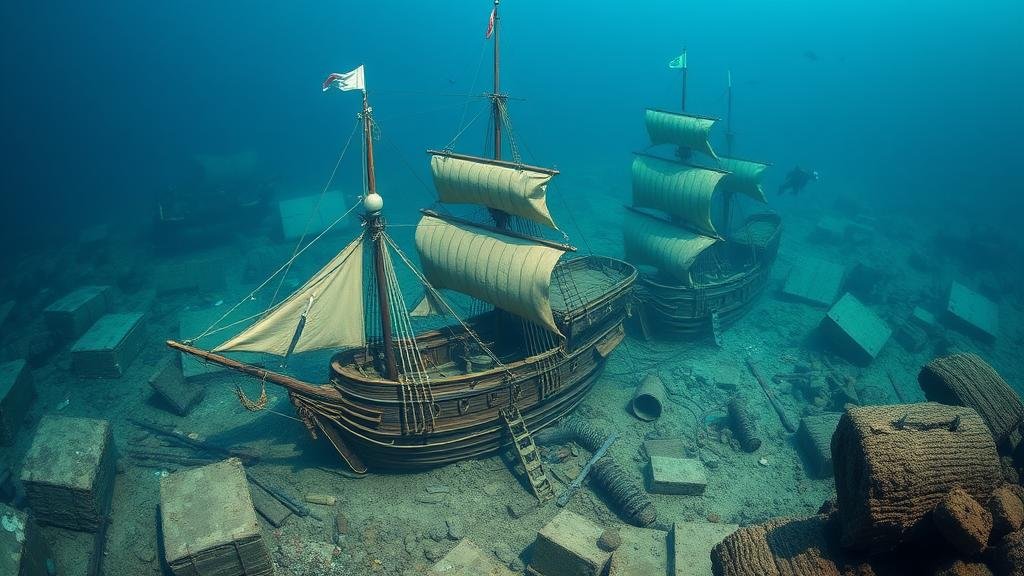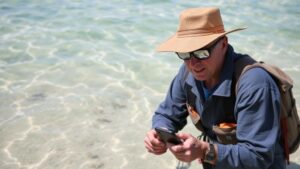Recovering Cargo and Valuables Near Sunken Colonial-Era Ships
Recovering Cargo and Valuables Near Sunken Colonial-Era Ships
The discovery and recovery of cargo and valuables from sunken colonial-era ships has become a compelling subject in the fields of maritime archaeology, history, and treasure hunting. These vessels often carried significant items that are not only valuable for their monetary worth but also for their historical significance, providing insights into the navigation, trade, and culture of that time. This article explores the methodologies, technologies, ethical considerations, and notable case studies associated with recovering these submerged treasures.
Historical Context of Colonial-Era Shipwrecks
Colonial-era ships were integral to global exchange, particularly during the 16th to 18th centuries. Many vessels sank due to storms, navigational errors, or conflict, leading to significant cargo losses. The Association for the Recovery of Historical Shipwrecks estimates that there are more than three million shipwrecks in the worlds oceans, with a considerable portion being colonial-era vessels. These wrecks may contain artifacts such as:
- Gold and silver coins
- Precious jewelry
- Household goods and trade items
The study and recovery of these artifacts can provide valuable insights into the socio-economic conditions of the era, trade routes, and the daily lives of individuals from that time.
Methodologies for Recovery
The recovery of items from shipwrecks is a complex process involving several methodologies, which are affected by the ships condition, depth, and location. Some standard techniques include:
- Remote Sensing: Tools such as side-scan sonar and magnetometers help locate shipwrecks underwater. Side-scan sonar, for instance, creates a detailed image of the sea floor, identifying anomalies that may indicate a shipwreck.
- Submersibles and ROVs: Remotely Operated Vehicles (ROVs) are often deployed for deep-water recovery missions. They can operate at significant depths and are equipped with mechanical arms for artifact retrieval.
- Manual Recovery: In shallower waters, divers can directly retrieve artifacts. This often requires specialized training and equipment, as divers must navigate potential hazards, including strong currents and marine life.
Technological Advances in Underwater Recovery
Technological advancements have significantly enhanced our capability to recover cargo and valuables from sunken ships. For example, the development of advanced imaging systems allows archaeologists to map wreck sites in three dimensions accurately. According to a 2020 report by the International Journal of Nautical Archaeology, the use of 3D modeling has improved documentation and preservation methods by providing detailed reconstructions of wreck sites.
Also, advancements in materials science, such as the creation of corrosion-resistant tools, have contributed to more successful recovery efforts. use of artificial intelligence to analyze sonar data has also demonstrated promising results in improving the accuracy of locating shipwrecks.
Notable Case Studies
Several famous cases illustrate the complexities of recovering cargo and valuables from colonial-era shipwrecks. One notable example is the recovery of the Spanish galleon Nuestra Señora de Atocha, which sank near the Florida Keys in 1622. After a lengthy search led by treasure hunter Mel Fisher, the ship was located in 1975, resulting in the recovery of over $450 million worth of gold and silver coins and artifacts. This case exemplifies both the potential rewards and challenges of treasure hunting, as it involved extensive legal battles over the ownership of the recovered items.
Another significant example is the excavation of the Queen Annes Revenge, the infamous pirate ship captained by Blackbeard. Discovered off the coast of North Carolina in 1996, significant treasure and artifacts have been recovered through careful archaeological studies, illuminating the life and workings of pirates in the colonial era.
Ethical Considerations in Maritime Archaeology
While recovering artifacts from shipwrecks can be lucrative, it raises several ethical questions. The debate centers on the distinction between treasure hunting and legitimate archaeological exploration. Recovery operations must balance the historical significance of artifacts with the potential for commercial exploitation.
Organizations like the UNESCO Convention on the Means of Prohibiting and Preventing the Illicit Import, Export, and Transfer of Ownership of Cultural Property (1970) advocate for the preservation of underwater cultural heritage. As a result, collaboration with archaeologists and historians is essential to ensure that any recovery efforts respect historical contexts and contribute to scholarly research.
Future Directions and Sustainability
Looking ahead, the future of recovering cargo and valuables from sunken colonial-era ships lies in the adoption of sustainable practices. As awareness of the ecological impact of underwater recovery grows, there is a concerted push for environmentally responsible methods. Efforts made to incorporate marine preservation with archaeological practices, ensuring that recovery does not harm fragile underwater ecosystems.
Plus, advancements in technology promise to deepen our understanding of nautical history while preserving these significant sites for future generations. For example, the integration of virtual reality could enhance public engagement, allowing people to experience shipwreck sites without disturbing the underwater environment.
Conclusion and Actionable Takeaways
Recovering cargo and valuables from sunken colonial-era ships encompasses a rich interplay of history, technology, and ethics. As maritime archaeology evolves, maintaining a respectful relationship with the underwater cultural heritage will be crucial. Aspiring treasure hunters and researchers should:
- Familiarize themselves with relevant laws regarding underwater recovery.
- Collaborate with recognized archaeological institutions to ensure responsible methods are employed.
- Stay updated on technological advances that may aid in locating and preserving shipwreck sites.
Through these practices, we can foster a legacy of respect for our nautical heritage while uncovering the fascinating stories held within sunken vessels.



